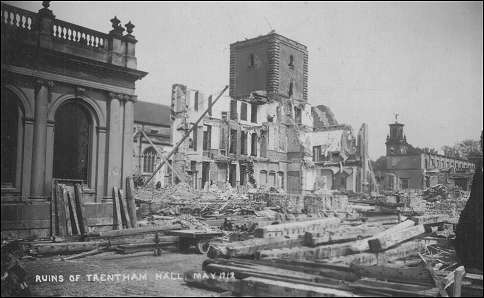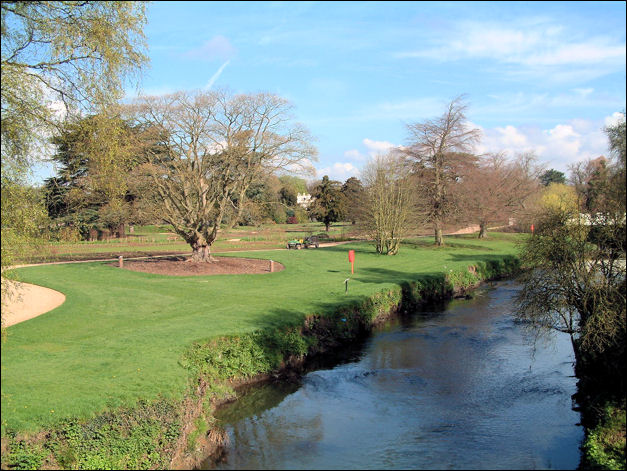|
“But
Trentham Hall was virtually abandoned by the Sutherlands in 1905,”
says Potteries historian Steve Birks. “Cromartie Sutherland-Leveson-Gower
(1851-1913), the 4th Duke was the last here. After him the
estate was sold in 1919. That effectively saw the end of this eminent
North Staffordshire family. And where are the Sutherlands now? The
direct line ended with the childless 5th Duke in 1963.
The Earldom passed to a niece Elizabeth, the current Countess, while
the Dukedom passed to a distant male heir, a
Scottish peer Francis Ronald Egerton.”

Demolition of
Trentham Hall - May 1912
So
what has this to do with the federation of Stoke-on-Trent?
“Well the 3rd Duke, George Granville, inherited Trentham
in 1861 at the height of the Industrial Revolution,” explains Steve.
“George and his son Cromartie were concerned by the pollution of the
River Trent as it passed through the estate. The furious Sutherlands
issued a number of injunctions against the Potteries’ towns to
prevent the continuing contamination. To use their words, ‘the
polluted state of the Trent is a terror to Trentham’.”
This
was a period when the hall was in a bad state of repair and there’s no
doubt they wanted to get out. So why did they strongly support
federation if they were leaving? Would they have stayed if the river
had been cleaned? And why did they want to give it away?
“Who
knows,” says Steve. “Certainly as far back as 1902 the Sutherlands
were petitioning against Fenton Council for permitting the discharge
of sewage and sludge from the potteries. They reckoned that Fenton
council was negligent in preventing the wilful pollution by some
factories that were dumping toxins into two tributaries of the Trent
known as Chittlings Brook and Longton Brook. Cromartie, who was at the
time mayor of Longton, claimed that effluence rendered the water unfit
for his cattle to drink. Even worse, the offensive stench caused
intolerable nuisance not just to him but to the general public of
Trentham. He asked the court for £1000 in damages and a restraining
order against Fenton Council preventing the dumping of sewage and
filthy water into the Trent feeders. But the petition failed and
that’s when, in 1905, he first offered the hall and 200 acres of land
to the County Council as a gift, but they turned it down. In 1907 he
again offered the hall and land this time to the Potteries’ towns to
make a park, but only on condition that federation went ahead. Once
again the offer was declined.

the River Trent as it passes through Trentham
Gardens
photo:
May 2008
There’s no doubt Cromartie was an activist for federation. When he
gave evidence at the federation enquiry in 1908 the Duke again placed
on written record the pollution in the Trent. Perhaps he thought it
would be easier to persuade a federated borough to take action than an
impoverished urban district council. Anyway he didn’t wait around. The
hall was demolished, apart from the west front and stable block. And
off he went.”
|
